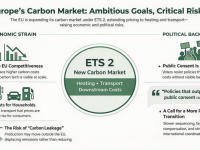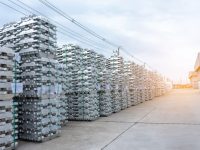The United States may be on the cusp of a genuine revival in primary aluminium smelting, a historically strategic industry that has languished for decades. Only six smelters remain in operation today and four of those are only partially active.
Once the backbone of high-quality aluminium production, the domestic smelting sector has been hollowed out by surging electricity costs, relentless global competition from subsidised producers and regulatory headwinds (aluminum.org).
Story of smelters at Century Aluminum
Now, policy shifts and renewed investment are rekindling optimism. Century Aluminum has committed a USD 50 million investment to restart more than 50,000 metric tonnes of previously idled capacity at its Mt. Holly, South Carolina smelter. This plant is currently operating at 75% capacity and is slated to ramp up to full production by June 2026, a milestone the facility hasn’t reached since 2015 (recyclingtoday.com).
The expected outcome? A nearly 10% boost in the US primary aluminium output, over 100 new jobs and an annual economic impact exceeding USD 890 million for South Carolina, with average wages around USD 100,000, according to a University of South Carolina study.
Century Aluminum attributes this resurgence directly to aggressive Section 232 tariffs on imported aluminium, which is now as high as 50%, posing significant alteration to the economics of domestic production (manufacturingdive.com).
Tariffs threaten to shake the very foundation of smelters
But here’s where the debate begins. These tariffs may help the US smelters, but they also disrupt the finely balanced North American aluminium supply chain.
Canada, the US’s largest aluminium supplier and a key partner under USMCA, has historically relied on duty-free trade to keep its smelters, regarded as the cleanest and most efficient in the world, running at scale. For Canadian producers, the US protectionism is not just an inconvenience; it’s an existential threat to jobs, investment and cross-border manufacturing integration.
What about the US smelters?
Even within the US, the story is more complex than the political headlines suggest. Yes, restarts like Mt. Holly and the proposed USD 4 billion Emirates Global Aluminium (EGA) smelter in Oklahoma, deemed as the first new US smelter in 45 years, generate excitement.
But tariffs are a double-edged sword. They raise input costs for the US downstream manufacturers that rely on competitively priced primary aluminium for everything from aerospace to automotive.
In the long run, if domestic capacity cannot meet demand at globally competitive prices, the same policy that revives smelters could quietly erode the competitiveness of entire manufacturing sectors.
Key projects taking the centre stage
The Oklahoma project, with a projected output of 600,000 tonnes and 2,800 direct and indirect jobs, could reshape the US aluminium landscape if it can overcome the same old challenge: power.
Smelters need stable, low-cost electricity (around USD 40/MWh) to survive, yet they are competing with deep-pocketed tech giants willing to pay USD 115/MWh for data centre energy (reuters.com). Without solving the energy puzzle, these high-profile restarts risk becoming politically convenient but economically fragile.
Where is the aluminium demand heading?
Meanwhile, demand for primary aluminium is projected to surge up to 40% by 2035, driven by infrastructure, defence and clean energy (industriouslabs.org). Meeting that demand will require both primary smelting and a massive expansion of secondary aluminium capacity.
Recycling already dominates the US supply and uses just 5% of the energy required for new smelting (aluminum.org). The risk is that policymakers chase the symbolism of “made in America” smelting while neglecting the more energy- and cost-efficient recycling sector. This sector could deliver much faster supply chain resilience without inflating prices for manufacturers.
The revival of primary aluminium smelting in the US is genuine, but it is neither simple nor universally beneficial. For some, it represents an overdue return to industrial sovereignty. For others, which also includes Canada’s hydro-powered smelters and the US manufacturers squeezed by higher costs, it could signal the start of a new round of competitive disadvantages. Whether this is a renaissance or a reshuffling of burdens will depend on whether the US can align energy policy, trade relationships and industrial strategy into a coherent, long-term plan.















